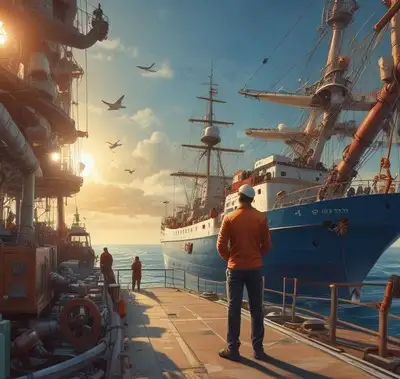The maritime industry, often viewed as traditional and resistant to change, is undergoing a significant transformation driven by technological advancements. These innovations are reshaping everything from vessel design to logistics management, enhancing efficiency, safety, and environmental sustainability across the seas. As we sail into the future, several key trends are shaping the course of maritime technology.
1. Autonomous Shipping
One of the most revolutionary trends in maritime technology is the advent of autonomous ships. These vessels utilize artificial intelligence (AI), sensors, and advanced algorithms to navigate and operate independently. Autonomous ships promise reduced operational costs, increased safety (by eliminating human error), and improved efficiency through optimized route planning and fuel consumption. Companies like Rolls-Royce and Kongsberg Maritime are pioneering autonomous technologies, paving the way for a new era in shipping.
2. Digitalization and Big Data
Digitalization is transforming every aspect of maritime operations, from fleet management to cargo tracking. The integration of IoT (Internet of Things) devices aboard ships enables real-time monitoring of machinery performance, fuel consumption, and environmental conditions. Big data analytics harnesses this wealth of information to predict maintenance needs, optimize logistics, and enhance decision-making processes. Cloud computing further facilitates data storage and accessibility, ensuring that insights are readily available both onshore and offshore.
3. Green Shipping
Environmental sustainability has become a paramount concern for the maritime industry. Stricter regulations and growing public awareness are driving the adoption of eco-friendly technologies. Advances in hybrid and LNG-powered vessels are reducing emissions of greenhouse gases and pollutants. Furthermore, innovations in hull design and propulsion systems aim to minimize drag and improve fuel efficiency. Sustainable practices such as ballast water management and waste recycling are also gaining traction, ensuring that maritime activities are aligned with global conservation goals.
4. Blockchain for Supply Chain Transparency
Blockchain technology is revolutionizing supply chain management by enhancing transparency, traceability, and security. In the maritime sector, blockchain facilitates seamless documentation and verification of transactions, from cargo origins to final delivery. Smart contracts automate processes, reducing paperwork and minimizing disputes. This technology not only streamlines operations but also strengthens trust among stakeholders, making international trade more efficient and reliable.
5. 3D Printing and On-Demand Manufacturing
Advancements in 3D printing are reshaping the manufacturing landscape, including shipbuilding. This technology enables the rapid prototyping and production of complex components on-demand, reducing lead times and costs associated with traditional manufacturing methods. In remote or disaster-stricken areas, 3D printing can produce critical spare parts, ensuring minimal downtime for vessels. As the technology matures, its potential to revolutionize maintenance and repair operations in the maritime industry becomes increasingly evident.
6. Cybersecurity and Digital Resilience
With increased digitalization comes heightened cybersecurity risks. Maritime companies are investing in robust cybersecurity measures to protect sensitive data, onboard systems, and communication networks from cyber threats. Training programs educate crew members about cybersecurity best practices to mitigate human error vulnerabilities. Additionally, the industry is collaborating with cybersecurity experts to develop resilient systems that can withstand evolving cyber threats, ensuring the continuity and safety of maritime operations.
7. Augmented Reality (AR) and Virtual Reality (VR)
AR and VR technologies are enhancing training, maintenance, and operational efficiency in the maritime sector. VR simulators provide realistic training scenarios for crew members, allowing them to practice emergency procedures and navigation skills in a safe environment. AR applications assist technicians during maintenance and repair tasks by overlaying digital information onto physical equipment, reducing downtime and improving accuracy. These immersive technologies improve safety, proficiency, and decision-making capabilities across maritime operations.
Conclusion
The maritime industry is embracing technological innovation at an unprecedented pace, driven by the need for efficiency, sustainability, and safety. Autonomous shipping, digitalization, green technologies, blockchain, 3D printing, cybersecurity, and AR/VR are among the transformative trends shaping the future of maritime technology. As these trends continue to evolve, they promise to redefine industry standards, improve operational outcomes, and navigate the seas toward a more connected, sustainable, and secure future. Embracing these advancements will be crucial for stakeholders in staying competitive and resilient in an increasingly digital and dynamic maritime environment.



